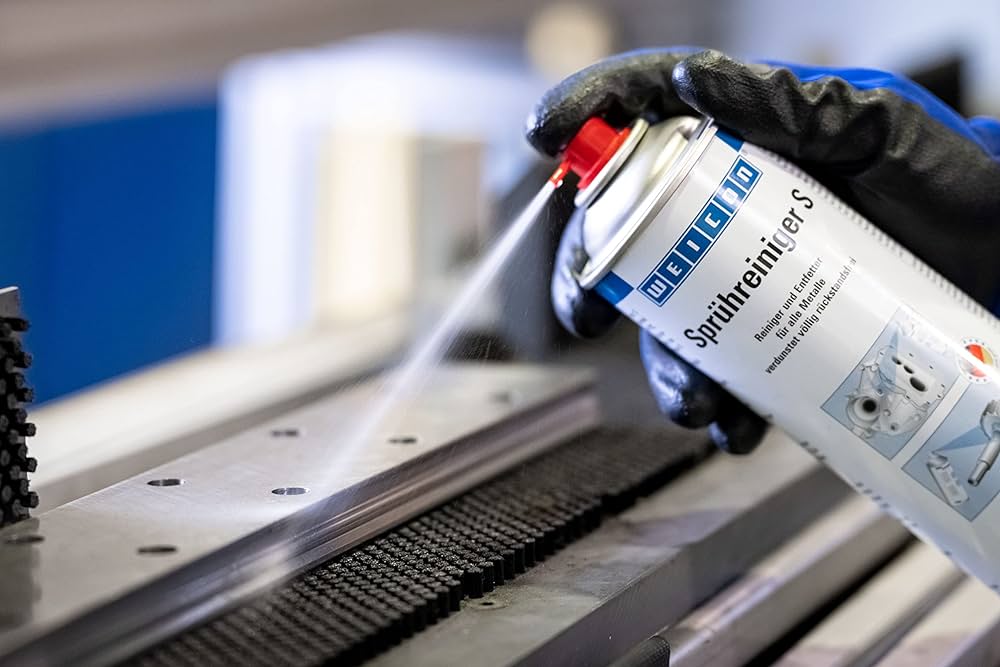

- Contributions by industrial experts with engineers in mind
- Focused on specialty-chemical material applications and selection
Knowledge Center
Glass Beads for Adhesives Q&A

Glass beads are added to adhesives to control bond-line thickness. They have a relatively uniform size that typically ranges from 1 to 10 mil in diameter; however, some applications use spacer beads as large as 20 or 30 mil. For design engineers who need help with product selection, this Q&A from Gluespec® provides answers to frequently asked questions about glass microspheres for adhesives.
How does bond-line thickness affect strength?
Bond-line thickness is the thickness of the adhesive between the joined substrates. A uniform bond line contributes to optimal shear, peel, and tensile strength. With rigid substrates, bond-line thickness also affects cleavage.
Thinner bond lines favor shear strength, the maximum amount of stress an adhesive can withstand before it fails during shear. Thicker bond lines favor peel strength, the average load per unit width that’s required to separate bonded materials where the angle of separation is 180°.
In general, the minimum recommended bond-line thickness is 5 mil; however, testing may be performed over a range between 5 and 20 mils. With cyanoacrylate adhesives or superglues, bond lines of 1 to 2 mil are typical instead.
Which material are glass beads made of?
Most glass beads are made of soda-lime glass, one of the simplest glasses in terms of composition. Soda-lime is also cost-effective because it’s easy to produce – and with the proper particle size distribution. Unlike crystalline silica glass, which produces harmful dust, soda-lime glass is safe and generally non-toxic.
Are spacer beads for adhesives solid or hollow?
Spacer beads for adhesives are solid. Hollow glass microspheres are available, but they have low crush strength and are used in non-adhesive applications. Potters Industries supplies both types of beads, but SPHERIGLASS® solid glass spheres are specifically designed for controlling bond line thickness. Mo-Sci, another leading supplier, also offers solid glass microspheres for spacer beads.
For adhesive bonding, do the optical properties of glass microspheres matter?
No. Technical data sheets list optical properties such as color, reflectivity, and index of refraction because glass beads are also used for producing brighter markings on roadways and airport runways. For adhesive bonding, however, glass microspheres are clear and their optical properties don’t affect their performance as spacer beads.
Do glass beads for adhesives have a uniform size?
Spacer beads are available in different sizes, but the microspheres in an adhesive have a substantially uniform diameter. ASTM D-1214, a standard test method for the sieve analysis of glass spheres, is used during mesh screening. ASTM D-1214 defines a method for testing glass bead sizes but the engineer needs to determine which size beads to use for the application.
What’s the relationship between size distribution, class, and cost?
Glass microspheres with tighter size distributions are more expensive. The class that is associated with a product indicates the size distribution and the percentage of beads that are true spheres. For example, Class VI spacer-grade microspheres are 90% true spheres and have greater than 95% sizing in the specified range. These spacer beads cost more than Class IV industrial-grade microspheres, which are supplied as 85% true spheres and have 80% or better sizing in the specified range.
Are there other standards for glass beads?
Yes. Major aerospace and defense contractors have their own standards. Consequently, glass beads may need to meet the requirements of Raytheon HMS20-1776 or Boeing SCGMS-53004.
How are spacer beads added to adhesives?
Engineers have three options.
- They can purchase adhesives that are manufactured with glass beads. Examples include DOWSIL™ 3-1818 Thermally Conductive Adhesive, Henkel LOCTITE® AAH3410, and Parker LORD® 406-19 Modified Acrylic Adhesive with Glass Beads.
- They can buy glass beads separately and add the microspheres to the adhesive themselves.
- They can ask a custom packager like KitPackers to add glass beads to an adhesive that does not already contain microspheres.
Why do adhesive manufacturers add glass beads to some products?
Adhesive manufacturers add glass beads to meet customer requirements for thermal conductivity (TC) and dielectric strength. In applications like electronics, it’s important to have a consistent TC across a surface for more effective heat transfer. Glass beads provide a consistent stand-off between joined substrates such as a heat source and a heat sink.
Dielectric strength, the maximum voltage a material can withstand before it breaks down and allows an electric current to pass through it, varies with thickness. Dielectric thickness is non-linear, however, and it diminishes beyond a certain material thickness. For a thin layer of adhesive at a uniform thickness, glass beads can be used.
It’s also worth nothing that glass beads can help preserve concentricity when bonding spherical shafts. Joining the shaft of a golf club to the club head is an example. Spacer beads are also used to prevent problems where part of the joint is “starved”, meaning it has too little adhesive, while another part of the joint is “fat” and has too much adhesive.
Are there other ways to control bond line thickness?
With liquid adhesives, engineers can add metal shims or fishing line instead. They can also substitute liquid adhesives with film adhesives that come in sheets with a uniform thickness.
Are glass microspheres used in one-part adhesives, two-part adhesives, or both?
Glass beads are used in one-part adhesives like DuPont BETAMATE® 1005G. They’re also part of two-part products. For example, a custom packager can mix a two-part, room-temperature curing adhesive and load it into a syringe. To slow the cure, the adhesive is shipped in dry ice. Later, after receiving the adhesive, the customer can put the product in the freezer until it’s time for use.
How many glass beads are added to an adhesive?
Glass beads are sold by weight in pounds and kilograms; however, they are added to an adhesive as a percentage of total weight, typically 1% by volume. At such a low percentage, spacer beads can maintain the appropriate bond-line thickness without negatively affecting the properties of the adhesive.
Consider the following example with a 1:1 adhesive system. Glass beads are added 5% by weight to the Part A side. Since the product will be mixed, there isn’t a need to add glass beads to the Part B side. Part A is then combined with Part B, and the mixed product now contains glass beads 2.5% by weight. This equals 1% by volume.
For some applications, a higher percentage of glass beads are used. The size of the bond area affects the appropriate amount to load. With a larger assembly, however, an engineer still need to determine how many beads are really needed for the application.
Does the viscosity of an adhesive matter to bond-line thickness?
One-part adhesives have batch-level differences in viscosity, a measure of resistance to flow. If the viscosity was always the same between batches, clamping alone could be used to control bond-line thickness.
With two-part adhesives, components react with each other and thicken. Glass beads reduce uncertainty because the size of the beads, and therefore bond-line thickness, are substantially uniform.
With low-viscosity liquid adhesives, it’s important to consider that spacer beads are significantly denser than the resin. In a very liquid system, this can cause unwanted settling.
Why can’t you just apply pressure to achieve the bond line thickness you want?
Except for contact adhesives that contain volatiles, adhesives normally need only 1 psi for bonding. That’s a very gentle pressure. When substrates have very flat surfaces, the adhesive can “squeeze out” when pressure applied. In other words, the adhesive is forced-out between the mating substrates. With non-uniform surfaces, there’s less risk of squeezing out the adhesive.





